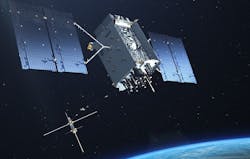The Space Force has gone from joke to reality
WASHINGTON - When the Trump administration first proposed the Space Force as the sixth branch of the United States military in June 2018, many people were undecided whether the idea was an atrocity or a joke. On the atrocity side, some analysts believed that the Space Force constituted a dangerous plan to militarize space. On the joke side, social media became littered with images from Star Wars and Star Trek. Netflix even greenlit a “workplace comedy” called “Space Force,” writes Mark R. Whittington for The Hill. Continue reading original article
The Intelligent Aerospace take:
December 17, 2019 - The National Defense Authorization Act (NDAA) provides an increase of approximately 2.8% in defense spending, including nearly $660 billion for the Department of Defense and Department of Energy's security programs, $71.5 billion to pay for ongoing wars, and about $5.3 billion to pay for repairs following natural disasters. Included was the authorization to establish a "space force" as a way to protect and deter actions against U.S. assets in space fundamental to modern warfare, like GPS and communication satellites. The action comes after both China and India successfully destroyed satellites in orbit in exercises.
Related: India announces it shot down a satellite
Related: Lockheed Martin opens space training, simulation and development facility
Jamie Whitney, Associate Editor
Intelligent Aerospace
